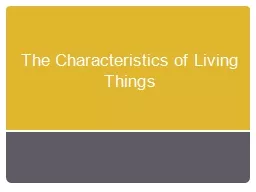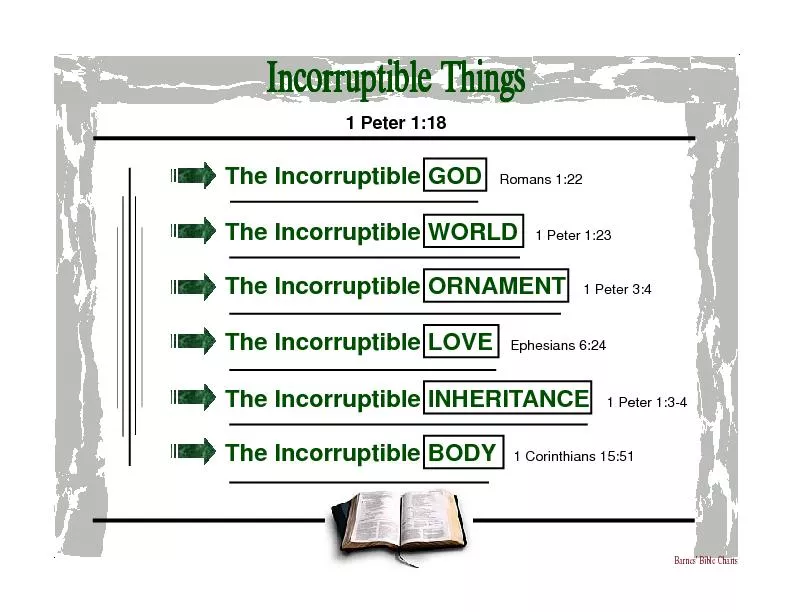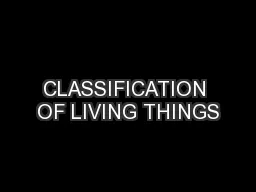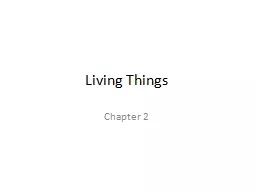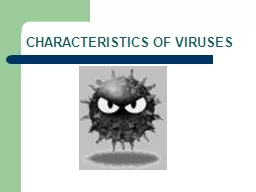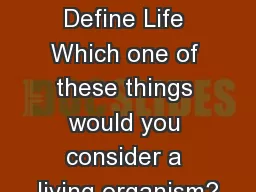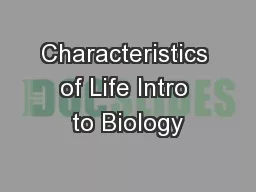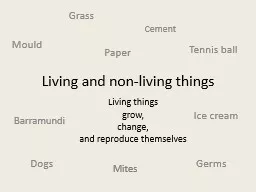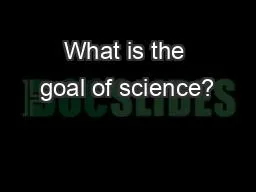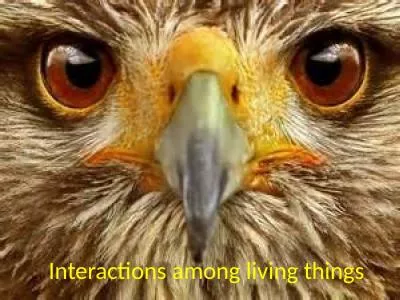PPT-The Characteristics of Living Things
Author : alexa-scheidler | Published Date : 2018-03-12
Characteristics of Living Things What makes something living DIFFERENT from something nonliving This clip from Sesame Street might help answer that question Characteristics
Presentation Embed Code
Download Presentation
Download Presentation The PPT/PDF document "The Characteristics of Living Things" is the property of its rightful owner. Permission is granted to download and print the materials on this website for personal, non-commercial use only, and to display it on your personal computer provided you do not modify the materials and that you retain all copyright notices contained in the materials. By downloading content from our website, you accept the terms of this agreement.
The Characteristics of Living Things: Transcript
Download Rules Of Document
"The Characteristics of Living Things"The content belongs to its owner. You may download and print it for personal use, without modification, and keep all copyright notices. By downloading, you agree to these terms.
Related Documents

